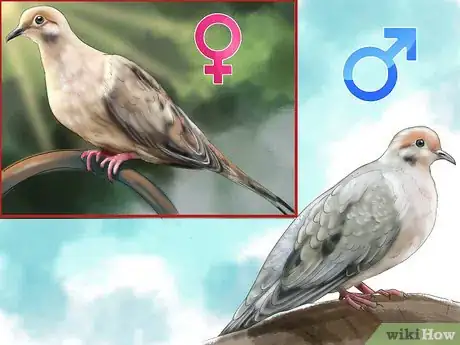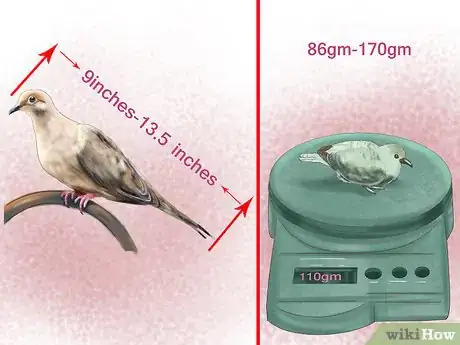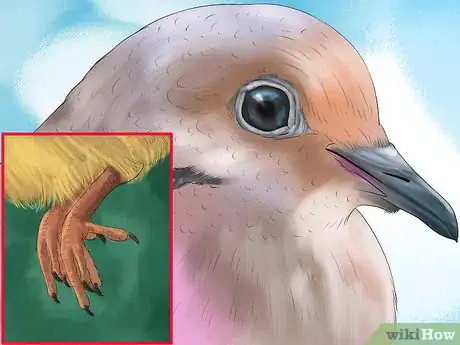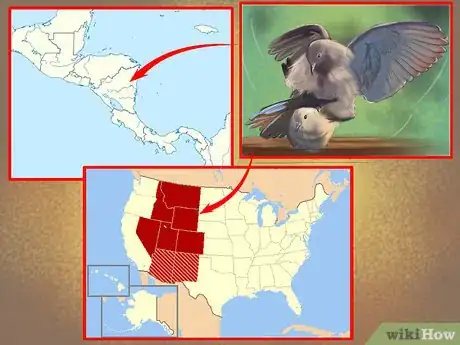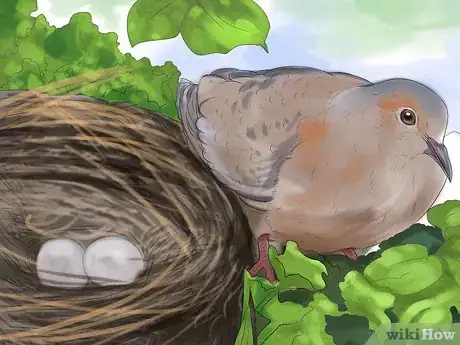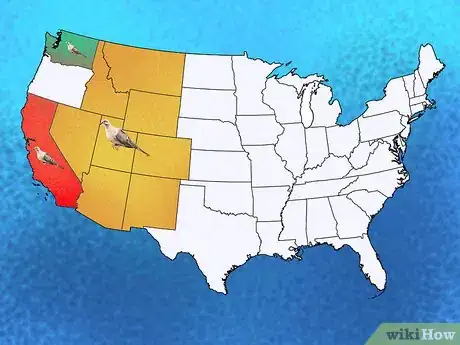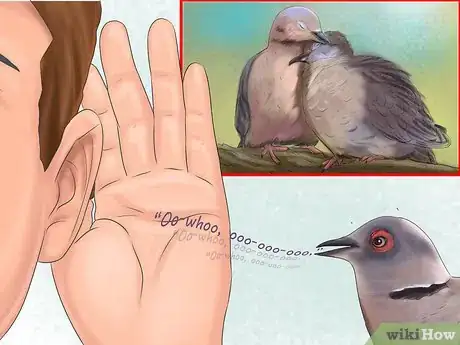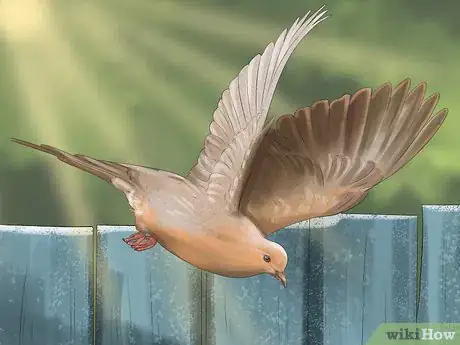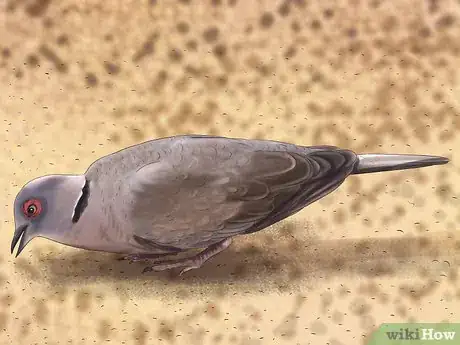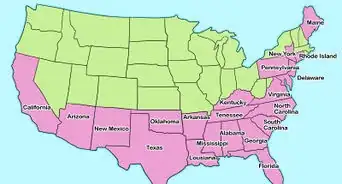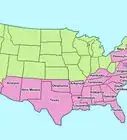This article was co-authored by Pippa Elliott, MRCVS. Dr. Elliott, BVMS, MRCVS is a veterinarian with over 30 years of experience in veterinary surgery and companion animal practice. She graduated from the University of Glasgow in 1987 with a degree in veterinary medicine and surgery. She has worked at the same animal clinic in her hometown for over 20 years.
This article has been viewed 57,609 times.
Aspiring ornithologists or even those looking to get into amateur bird watching should know how to identify Mourning Doves. These birds are common throughout North America (except for the northern regions of Canada)[1] and are known for their distinctive call and relatively ordinary appearance. There are several ways to positively identify a Mourning Dove.
Steps
Visually Identifying a Mourning Dove
-
1Check the bird's coloring. Mourning Doves have a tan or grayish-brown body, with slightly lighter coloring on their chests. Their wings have several dark spots on them, often nearly black; tail feathers are usually somewhat darker than their body color, with white tips and edges.[2] [3]
- Head feathers often differ between adult males and females, with males having a bluish tint to theirs and females having a pinkish hue; however, these patterns sometimes overlap.
- In addition to feather coloring, Mourning Doves can also be identified by their dark brown or black beak, their bright reddish-pink feet, and the light turquoise flesh around their eyes.
-
2Look at the bird's size. Adult Mourning Doves range from about 23 to 34 cm (approximately 9 to 13.5 inches) in length from beak to tip of the tail, with females slightly shorter than males by a few centimeters; most Mourning Doves come in at around 12 inches in length. Common weight ranges are between 86 and 170 grams (again, with males being heavier than females).
- An adult Mourning Dove's wingspan is around 45 cm.
Advertisement -
3Assess the bird's body shape and proportions. Mourning Doves are often described as having a round head that looks too small for its body. These birds are rather slender overall and delicate in appearance, with a smooth body profile from head to tail and a round chest.[4]
- The Mourning Dove's beak is tapered and sharp at the tip; its length is only about a third the depth of the bird's head.
- The Mourning Dove has relatively short legs for its body size, even when fully extended.
-
4Check out the bird's tail. Mourning Doves have a distinctive tail, which is very long and tapers to a point. This is one of the features that can be used to easily distinguish between Mourning Doves and some of their close relatives (such as other birds in the dove family), as no other North American dove has this feature.[5]
- The Mourning Dove's pointed tail does not fan out during flight, landings, or while the bird is standing still.[6]
Using Context to Assist with Identification
-
1Note your geographical location. Mourning Doves can be found in habitats extending from southern Central America into southern Canada and all over the contiguous United States. They are also found on the Caribbean and Hawaiian islands, but their exact range varies with climate and terrain.[7]
- Mourning doves generally avoid very cold climates, which is why they are not likely to be found in extreme northern regions.
- Mourning doves are not likely to be found in extreme desert environments because there is nothing for them to eat there.
-
2Observe the time of year. With a few exceptions, Mourning Doves are seasonally migratory birds, meaning that their habitats and geographical locations change with the time of year. You may have no luck finding these birds in the winter season in places with harsh winter temperatures.[8]
- Mourning Doves are only found in Canada during the summer breeding season when temperatures are warmest. Conversely, they are found in Central America in greatest numbers during winter, when northern temperatures are colder; however, in their southernmost range many do not migrate north in the summer.
- In the Rocky Mountain region of the U.S., Mourning Dove occupation is limited to more southern latitudes than in other regions of the U.S.
-
3Consider environmental conditions. Mourning Doves are not usually found in swamps or dense forests. These birds prefer to live in grasslands, brush fields, farm areas, and sparse forests. However, they can be found in high-elevation mountain habitats during the warmer months, so long as the vegetation is not too highly concentrated.[9] [10]
- Though they are not commonly found in dense urban areas (except for city parks and areas with lots of bare ground), Mourning Doves can often be seen perching on telephone wires and similar overhead structures.[11]
-
4Find nests loosely constructed of twigs and sticks. Mourning Doves do not put much effort into their nests, so they are typically made of whatever vegetation can most easily be found nearby.[12]
- Mourning Dove nests can be found at various heights from the ground, ranging from the ground itself to high tree branches; they are not fond of dense tree canopies, however.
- Often, the loose construction of the Mourning Dove's nest leaves gaps between twigs that are large enough that an observer can spot their eggs when the nest is viewed from below.
-
5Stick to lower elevation regions. Although Mourning Doves have been known to nest (during the breeding season) at elevations up to 10,000 feet, your best bet for finding and identifying these birds is to look for them at lower elevations. This is due to these birds' preference for open areas without lots of dense trees or groundcover.
- This is not likely to be a significant issue unless you are seeking Mourning Doves in extremely mountainous regions of Washington, California, or the Rocky Mountain states in the U.S.
Identifying Mourning Dove Behavior
-
1Listen for their mournful call. Mourning Doves are given this name because their call sounds particularly sad, as if they are in mourning. The call is relatively quiet and follows the same pattern each time, which sounds like, "Oo-whoo, ooo-ooo-ooo," hitting its highest pitch on the "whoo" syllable.[13] [14]
- This is the male Mourning Dove's mating call; other, similar sounds can also be heard coming from these birds, such as their warning call and the female's soft coo in response to a male's call.
- These calls can most often be heard in the spring and summer seasons, during the Mourning Dove's breeding period.
-
2Look for nesting pairs. Mourning Doves nest in pairs during their breeding season (during the spring and summer months) but migrate in flocks (during autumn and winter). If you are looking for these birds during the breeding season, you will most likely notice them hanging out in pairs, even if other Mourning Doves are present nearby.
- Immature Mourning Doves often join flocks before the end of the breeding season, but are not joined by adult birds until the migration season approaches.
- Mourning Doves sometimes feed in small groups during nesting periods.
-
3Assess the bird's flight. Mourning Doves have a very smooth, swift flight, even from take-off. The path of a Mourning Dove's flight is usually more or less a straight line, with minimal swooping and swerving (except when necessary).[15]
- The rapid beating of the Mourning Dove's wings when it takes off produces a high-pitched whirring or whistling noise, which usually fades as the bird gains speed.
-
4Notice the bird's feeding habits. Mourning Doves usually feed on seeds found on the ground.[16] This is why these birds typically prefer open habitats with sparse vegetation. Mourning Doves often feed in agricultural fields due to the ease of finding grains and weed seeds there.
- Because these birds are so common throughout the U.S., you are likely to see them in your own yard if you put up a bird seed feeder or spread seed on the ground.
Warnings
- Mourning Doves are popular game birds in the U.S. and are frequently hunted. If you are out in the wilderness looking for these birds, be cautious and wear brightly colored clothing, especially during hunting season.⧼thumbs_response⧽
References
- ↑ https://www.allaboutbirds.org/guide/Mourning_Dove/id
- ↑ http://identify.whatbird.com/obj/163/overview/Mourning_Dove.aspx
- ↑ https://www.allaboutbirds.org/guide/Mourning_Dove/id
- ↑ http://animals.nationalgeographic.com/animals/birding/mourning-dove/
- ↑ http://animals.nationalgeographic.com/animals/birding/mourning-dove/
- ↑ https://www.allaboutbirds.org/guide/Mourning_Dove/id
- ↑ http://identify.whatbird.com/obj/163/overview/Mourning_Dove.aspx
- ↑ http://identify.whatbird.com/obj/163/overview/Mourning_Dove.aspx
- ↑ https://www.allaboutbirds.org/guide/Mourning_Dove/id
- ↑ http://animals.nationalgeographic.com/animals/birding/mourning-dove/
- ↑ https://www.allaboutbirds.org/guide/Mourning_Dove/id
- ↑ http://animals.nationalgeographic.com/animals/birding/mourning-dove/
- ↑ http://identify.whatbird.com/obj/163/overview/Mourning_Dove.aspx
- ↑ http://animals.nationalgeographic.com/animals/birding/mourning-dove/
- ↑ http://identify.whatbird.com/obj/163/overview/Mourning_Dove.aspx
- ↑ http://identify.whatbird.com/obj/163/overview/Mourning_Dove.aspx
About This Article
To identify a morning dove, check the bird’s coloring, which should be tan or grayish brown, with dark spotted wings and a slightly lighter coloring on their chest. Additionally, look for a bird that's around 12 inches long, with a brown or black beak. You can also identify a morning dove by its call, which is relatively quiet, mournful, and repetitive. If you see a morning dove in flight, you’ll notice that it's very smooth and tends to move in a straight line with little swooping or swerving. For more tips from our Veterinary co-author, including how to identify a morning dove by its feeding habits, keep reading!
